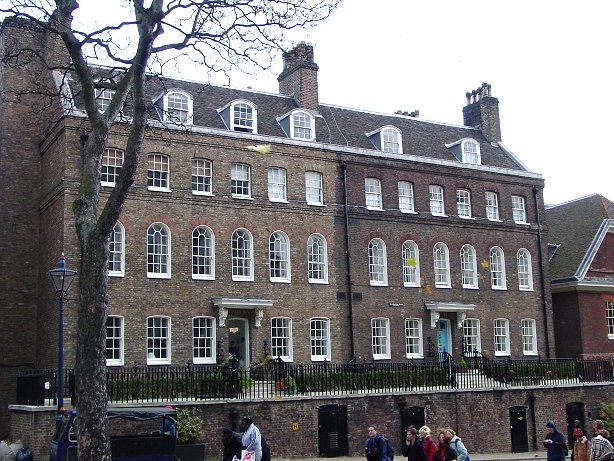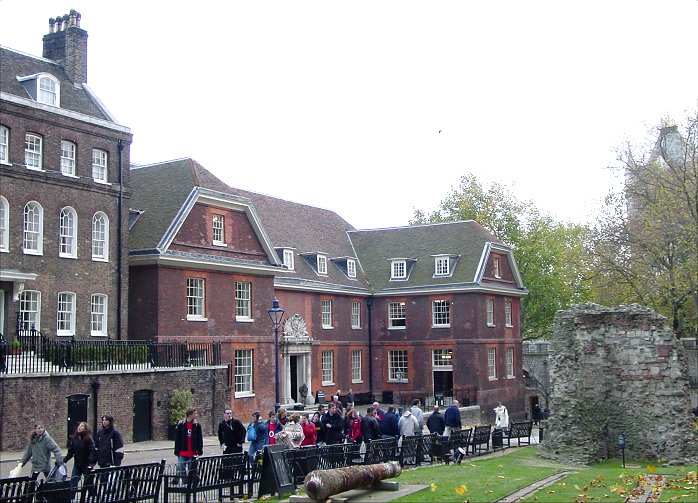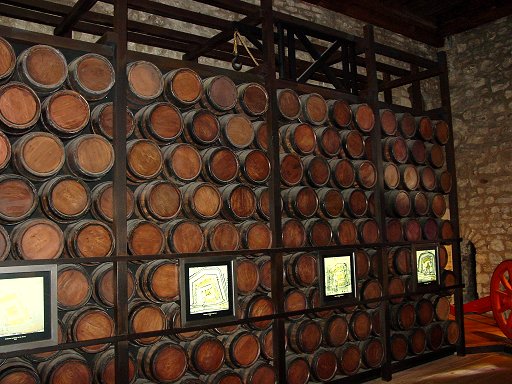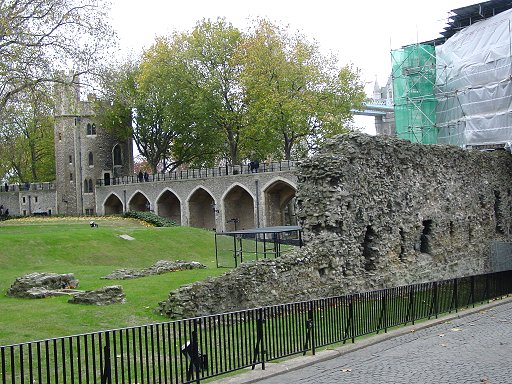
Eighteenth Century Era Buildings
After the monarchy was restored in 1660, the Office of Ordnance began to occupy more of the Tower, which was its headquarters. The Board was responsible for the Royal Artillery (and eventually the Engineers), fortifications, and supplying weapons to the army and navy. Office space, musket manufactures, proofing facilities, storehouses, barracks, and powder stores were all part of the Tower facility. Until facilities were built in more convenient locations near the dockyards starting in the late 1600s, warships sailed up the Thames to get their armament and ammunition at the Tower.
In the early 1700s, a standard musket replaced the previous bewildering system whereby colonels purchased muskets for their regiments. Now, the government purchased lock mechanisms and barrels, proofed them, and stored them in the Tower. They would be assembled when needed, presumably on the wharf. This was in fitting with the centralization occurring in other European armies and reduced the graft which could occur when a colonel got a "good deal" on muskets and pocketed the difference. Elsewhere in the Tower, a cannon boring machine was in operation at Traitors' Gate at some time during the era, although it would seem that the creation of the arsenal at Woolwich in 1717 would have made cannon manufacture here unnecessary.
The Tower's use as a prison declined with the Restoration, and in 1812 the mint left, followed by the menagerie in 1834, and the Record Office in 1850. In 1855 the Ordnance Office was replaced by the War Office, and the Tower's military use declined as well. Fire had already claimed the Grand Storehouse in 1841, and sadly, many of the eighteenth century buildings were later destroyed in order to restore the Tower to a medieval appearance for the dubious benefit of tourists.

The Hospital Blocks
Built in the early 1700s, and now known as the Hospital Blocks due to its later use, this building was originally occupied by the Board of Ordnance. The left half was bombed in World War II and was later restored.

New Armouries
Built in 1663-4, this is the last of the Tower's storehouses. It is immediately next door to the Hospital Blocks on the left and now houses a restaurant. The stone ruins on the right are of the Wardrobe Tower, part of the innermost ward walls which were based on the old Roman city walls. By the eighteenth century, the innermost ward walls were demolished, and the area was filled with Ordnance buildings.
 The White Tower - the original Tower of London |
 Gunpowder Storage Display |
The White Tower was used to store gunpowder beginning in the early 1600s. London residents worried that the massive gunpowder store would explode and destroy much of the city. A business with great dangers and fluctuations, the gunpowder for Britain's armed forces was made in the upper Thames Valley where transportation to the capital was most convenient.

This is the view from the reconstructed southern inner wall. The building on the left is the west end of the Wellington Barracks, built on the site of the Grand Storehouse which burned in 1841. Next is the White Tower, where among other things powder was stored. The Hospital Blocks, used as offices in the eighteenth century is next - followed by the New Armouries. The grassy area in the center was once occupied by the Great Hall and other buildings until the late 1600s when they were replaced by Ordnance related buildings. Before the time of the massive demolitions in the late 1800s, the Horse Armouries were adjacent to the White Tower followed by the Ordnance Office on the site of the reconstructed inner wall. Lanthorn Tower is visible at the immediate end of the wall to the right. It had been destroyed by fire in the 1770s.

This is a slightly different view of the reconstructed inner wall from below. The rough looking wall on the right is the remains of the wall of the innermost ward. You can also see some scaffolding for maintenance, a common occurrence at British historical sites in November.
Return to Tower of London Index